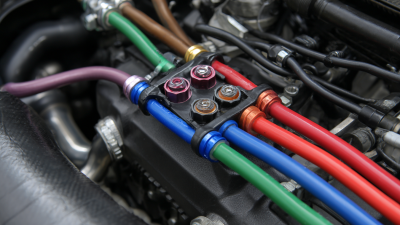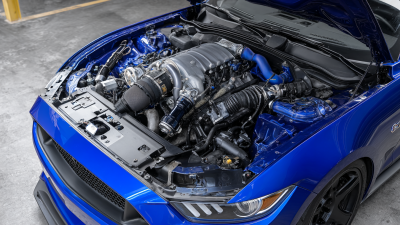When it comes to optimizing industrial processes, selecting the right materials is critical for efficiency and safety. One often overlooked component is the rubber hose, specifically its heat resistance capabilities. In our "Ultimate Guide to Choosing Rubber Hose Heat Resistance Solutions for Your Business," we delve into the essential factors that influence your decision-making process.

This tutorial will explore various types of rubber hoses, their heat resistance ratings, and the environments in which they perform best. Understanding the nuances of rubber hose heat resistance is imperative for businesses seeking to enhance their operational reliability while minimizing the risk of equipment failure due to heat exposure.
By the end of this guide, you will be equipped with the knowledge to make informed choices that align with your specific needs, ensuring your operations run smoothly under even the most demanding conditions.
When selecting heat-resistant rubber hoses for your business, several key factors must be taken into account to ensure optimal performance and longevity. One of the primary considerations is the temperature range of the application. Different rubber materials have varying capabilities to withstand heat, so it's crucial to choose hoses specifically designed for the temperatures they will encounter. For instance, silicone rubber hoses can endure higher temperatures compared to standard rubber varieties, making them a better choice in high-heat scenarios.
Another important factor is the hose's chemical compatibility. Depending on the fluids the hoses will transport, you may need to select a rubber that can resist degradation from chemicals, oils, or solvents. This not only extends the life of the hose but also prevents potential leaks and contamination. Additionally, the hose's pressure rating should align with the operational demands, ensuring that it can handle the required pressure without failing. By taking these considerations into account, businesses can make informed decisions that enhance their operational efficiency and reduce the risk of equipment downtime.
When selecting heat-resistant rubber materials for your business, it’s essential to understand the various types available, each designed to withstand specific temperatures and conditions. One of the most common types is silicone rubber, known for its excellent thermal stability. It can endure extreme temperatures, making it ideal for applications in the automotive and aerospace industries, where high heat exposure is frequent.
 Another popular choice is fluorocarbon rubber, which offers superior chemical resistance alongside its thermal properties. This makes it particularly suitable for industries that deal with aggressive solvents and oils.
Another popular choice is fluorocarbon rubber, which offers superior chemical resistance alongside its thermal properties. This makes it particularly suitable for industries that deal with aggressive solvents and oils.
Moreover, neoprene rubber is an excellent all-rounder, offering good heat resistance while also providing durability and flexibility. Its balanced properties make it widely used in gaskets, seals, and hoses, particularly in environments that experience fluctuating temperatures. Lastly, there’s EPDM (Ethylene Propylene Diene Monomer), which is specifically engineered to resist heat, ozone, and weathering, making it a go-to for outdoor applications. By understanding these materials and their unique characteristics, businesses can make informed decisions that enhance their operational efficiency and product longevity.
When selecting rubber hoses for high-temperature applications, understanding temperature ratings is crucial. The temperature ratings of rubber hoses depend on several factors, including the type of rubber compound used, the hose construction, and the operating conditions. For instance, materials like EPDM (Ethylene Propylene Diene Monomer) can generally withstand temperatures up to 150°C (302°F), while silicone hoses may endure even higher temperatures, often exceeding 200°C (392°F). According to a study by the Rubber Manufacturers Association, proper evaluation of these ratings can lead to significant reductions in operational failures, with reported savings of up to 25% in maintenance costs for businesses that select their materials wisely.
Moreover, the heat resistance of rubber hoses can be influenced by the hose diameter and wall thickness. Thicker walls can often provide better heat retention, but may also impact flexibility. A comprehensive report from the American Society for Testing and Materials (ASTM) emphasizes the importance of dynamic testing to ascertain how hoses perform under fluctuating temperatures. This includes considerations for long-term exposure to heat, which can degrade the material and lead to reduced performance. By choosing hoses with certified temperature ratings and understanding the specifics of their applications, businesses can optimize their systems, ensuring reliability and longevity in harsh working environments.
| Hose Type | Max Temperature (°C) | Material | Applications | Notes |
|---|---|---|---|---|
| EPDM Rubber Hose | 150 | EPDM | Heating systems, automotive | Good resistance to heat and aging |
| Silicone Rubber Hose | 200 | Silicone | Food and beverage, medical | Highly flexible, excellent temperature resistance |
| Nitrile Rubber Hose | 120 | Nitrile | Fuel transfer, hydraulic systems | Excellent oil resistance |
| HTS Rubber Hose | 300 | High Temperature Silicone | Industrial heating applications | Designed for high thermal shock |
| Fluoroelastomer Hose | 230 | Fluoroelastomer | Chemical processing, aerospace | Outstanding chemical resistance |
When it comes to industries that require heat-resistant rubber hoses, several applications stand out as particularly reliant on this specialized equipment. One of the most common uses is in the automotive sector, where hoses are subjected to high temperatures from engine coolant and exhaust systems. These hoses must endure extreme conditions while maintaining flexibility and durability, making heat resistance a critical factor in their performance.
 Another prominent application is in the food processing industry. Heat-resistant rubber hoses are essential for transporting hot liquids, such as oils and steam, without compromising the material's integrity or safety. Ensuring the right hose is selected can prevent contamination and maintain quality throughout the production process.
Another prominent application is in the food processing industry. Heat-resistant rubber hoses are essential for transporting hot liquids, such as oils and steam, without compromising the material's integrity or safety. Ensuring the right hose is selected can prevent contamination and maintain quality throughout the production process.
Tips: Always verify the temperature ratings of rubber hoses to ensure they meet the specific demands of your application. Regular inspections can help identify wear and tear before they lead to failures. Additionally, consider the compatibility of the hose material with the substances it will transport to optimize performance and longevity.
When it comes to maintaining rubber hoses under heat stress, proper care is essential for extending their lifespan and ensuring optimal performance in various applications. According to industry reports, exposure to high temperatures can significantly deteriorate rubber materials, leading to cracking and reduced flexibility. To combat the adverse effects of heat, it’s crucial to store hoses in a shaded area to prevent direct sunlight exposure. Furthermore, regular inspections and cleanings can help identify wear and tear before they escalate into serious problems.
Another effective strategy involves the use of protective coatings or covers. These can provide an extra layer of insulation, shielding hoses from intense heat while also preventing UV damage. Data from material science studies indicate that hoses treated with specialized heat-resistant compounds can withstand temperatures of up to 300°F, thus significantly prolonging their operational lifespan. Additionally, ensuring proper installation and avoiding sharp bends can minimize stress on the rubber. By following these maintenance tips, businesses can effectively enhance the durability and functionality of their rubber hoses, ensuring they remain efficient under demanding heat conditions.






